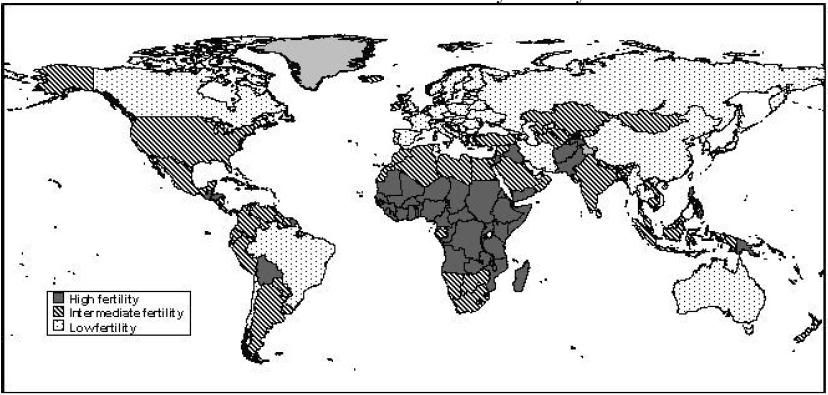The oft-repeated phrases which state something along the lines of this... food production must increase by 70-100% in the next 40 years to feed the world's growing population... make many presumptions. I cringe whenever an article begins that way, and too often, articles on the subject of food security do.
There are just too many variables, motives, and politics involved in feeding the world's populations to make such a simplistic statement. And if we truly are facing oil depletion, aquifer depletion, and rapidly advancing climate change exacerbating weather extremes, then most of us know that global population, in fact, will not increase as much as these predictions, so why pretend?
Yet, if technology does not prove to save us, many people can live in crowded conditions on small amounts of food with a low life expectancy, so population can grow rapidly, even under such circumstances. In addition to food availability, sanitation, birth control through the education of women, vaccinations and basic medical care are the keys to well being. Since the industrial or "hydrocarbon" revolution, strides have been made at reducing global poverty even as population numbers have advanced. On some days, I allow the optimist in me to believe that that can continue for many years going forward.
What does agriculture have to do with this and how is it motivated to respond to growing global populations?
I suspect that there are five main motives for feeding people.
Note that the U.S. is in the intermediate category. Unfortunately, the world economic model which relies upon growth has the low-population-growth developed nations envying the higher growth ones because younger demographics have been an important factor for national economic well-being — as long as those younger people have jobs enabling them to pay taxes and consume goods.

Note: The boundaries shown on this map do not imply official endorsement or acceptance by the United Nations.
And, yet, the political incorrectness of this important but taboo subject goes on.
K. McDonald
There are just too many variables, motives, and politics involved in feeding the world's populations to make such a simplistic statement. And if we truly are facing oil depletion, aquifer depletion, and rapidly advancing climate change exacerbating weather extremes, then most of us know that global population, in fact, will not increase as much as these predictions, so why pretend?
Yet, if technology does not prove to save us, many people can live in crowded conditions on small amounts of food with a low life expectancy, so population can grow rapidly, even under such circumstances. In addition to food availability, sanitation, birth control through the education of women, vaccinations and basic medical care are the keys to well being. Since the industrial or "hydrocarbon" revolution, strides have been made at reducing global poverty even as population numbers have advanced. On some days, I allow the optimist in me to believe that that can continue for many years going forward.
What does agriculture have to do with this and how is it motivated to respond to growing global populations?
I suspect that there are five main motives for feeding people.
- At the level of the individual, the need is obvious to feed oneself and one's family. This need transitions towards luxury, attaining an ever higher level of pleasurable food consumption, if economically possible.
- At the national leadership level, nations are politically stable when their populations are fed and cared for.
- At the national and international level there are philanthropic organizations and programs whose goal is to feed everyone.
- At the corporate level there are motives to keep increasing agricultural production to grow companies.
- At the national economic level of trade, nations are motivated to produce and export agricultural products.
Note that the U.S. is in the intermediate category. Unfortunately, the world economic model which relies upon growth has the low-population-growth developed nations envying the higher growth ones because younger demographics have been an important factor for national economic well-being — as long as those younger people have jobs enabling them to pay taxes and consume goods.
Countries and areas classified by fertility level

Note: The boundaries shown on this map do not imply official endorsement or acceptance by the United Nations.
High-fertility countries are mostly concentrated in Africa (39 out of the 55 countries in the continent have high fertility), but there are also nine in Asia, six in Oceania and four in Latin America. Pakistan, Nigeria, the Philippines, Ethiopia, the Democratic Republic of the Congo, the United Republic of Tanzania, Sudan, Kenya, Uganda, Iraq, Afghanistan, Ghana, Yemen, Mozambique and Madagascar, in order of population size, account for 75 per cent of the population of high-fertility countries. source: United Nations
And, yet, the political incorrectness of this important but taboo subject goes on.
K. McDonald